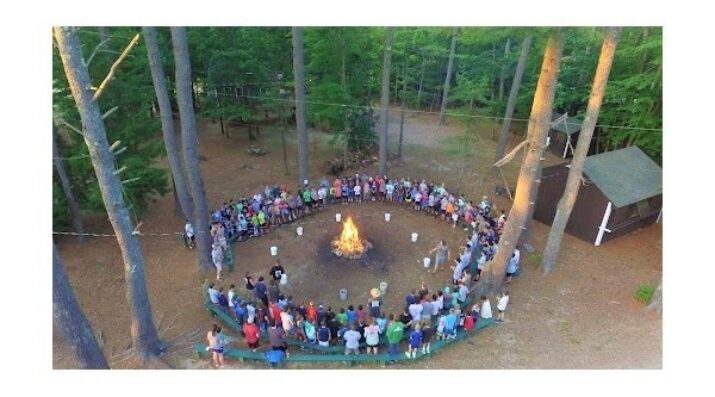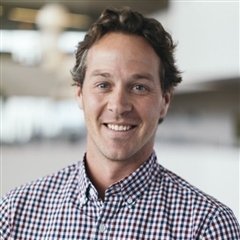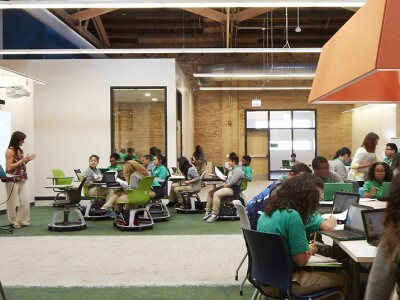3 Ways to Bring the Magic of Summer Camp to Your Classroom
Topics

We’ve all had the experience of truly purposeful, authentic learning and know how valuable it is. Educators are taking the best of what we know about learning, student support, effective instruction, and interpersonal skill-building to completely reimagine schools so that students experience that kind of purposeful learning all day, every day.
Explore three simple ways to bring the the joy, nature, and creativity of summer camp into classrooms to empower students with skills in collaboration, critical thinking, and communication.
Schools can learn from summer camps.
I know, nothing new here and perhaps something you have thought about before. If you have experienced summer camp, it’s likely you are envisioning fond memories of outdoor games, new friends, and endless adventure and laughter. If you haven’t had the opportunity to experience summer camp, let me offer a few details so you can visualize it:
- Connection in nature. Camps can be in the forest, on a lake, maybe even at an urban park. Many differences exist in the setting of camps, but there is often one common denominator–immersion in nature.
- Deep sense of community. Social groups form as is natural in any community. There are the new campers and the returning, the frontier village, the international crew, the CIT (counselor-in-training) program, and of course the ever-illusive secret club that had its own handshake. These groups each had their own identity and probably a skit and song, and all were a part of the larger community where all were welcome.
- Joy, genuine joy. Not to say all moments of camp are sunshine and rainbows, that’s not the case. I’ll spare you my stories of skinned knees, homesickness, and bruised ego. But at the end of the day, smiles and laughter abound at summer camp in an atmosphere of joyful exuberance.
The holiday season is often one of introspection for many. As we approach the new year, I found myself thinking of how the camp experiences of my youth impacted my development, and if we could apply any of these experiences to our community of schools in the year ahead. Spoiler alert, the answer is YES!
While I didn’t know it at the time, there is one word that stands out among others to describe the experience I had in my youth at summer camp.
I was empowered.
Camp, whether a sleep-away experience or a day-camp, provides a natural learning environment amidst an accepting and adventurous community where youth can explore themselves and the world to better understand themselves in the world. Camps hit a few of the critical components we know make for deep learning experiences.
To start, camp provided me a supportive structure of activities all the while offering choice and voice based on interest and passion. (That’s not exactly the same verbiage I used when I was 12!) I signed up after breakfast for the afternoon activity, and it wasn’t an easy decision to make, but what I do know is I had agency and opportunity. One day it might be the ropes course with the sportsfield crew and the next day arts and crafts with the hobbies team. If there was still room, maybe I would take a kayak out on the water with the waterfront group. Some activities were individual and others collaborative. Competition was an option too, particularly at the 4-square court. There was an option to create your own activity as well, which was something I was a bit intimidated by.
All these new and varied growth experiences created opportunities for self exploration and provided me room to grow.
I don’t know exactly why, but camp was a place where I felt comfortable and supported to face fears. Like many, I was often afraid of stepping outside of my comfort zone but yet I sang a song in front of dozens of people, climbed the ropes course with shaking hands and knees, and tried water skiing. I’ve wondered why I felt more open to these experiences at that time. Likely it was a combination of youthful exuberance and nurturing learning environment.
This structure of the days at summer camp gave room to address opposing but equally important human needs of freedom and exploration as well as safety and security. These experiences gave campers countless opportunities to learn lessons in collaboration, tolerance, creativity, empathy, critical thinking, vulnerability, and communication.
And this isn’t to say any of the above doesn’t happen in schools. It does. Models exist that honor and promote choice and voice, experiential learning in nature, and opportunities to overcome fears. But too often it seems that the pull of an increasing amount of competing priorities—common standard assessments, grade band curricular expectations, and an overflowing inbox—crowd out learner-centered ambitions.
To push against the pull of competing priorities, I offer 3 ways to bring the magic of summer camp into our classrooms.
1. Be silly.
Summer camp was full of learning experiences, and one doesn’t need a formal summative test to attest to campers’ growth over the summer. Imaginative play and creative expression are prevalent in camps, and these attributes are often evident in younger grades of our school system too. All the while, as students ‘grow up’ many schools deprioritize the importance of imagination, creativity, and innovation. Yet these are just the types of skills we then ask for in young adults as they enter professional lives.
Sir Ken Robinson describes imagination as the ability to bring to mind things outside of the five senses. We all have creativity, and yet the industrial model prevalent in schools could be criticized as suppressing it. Channel your inner camper and work in fun ways to learn and grow.
Improv is a great activity that translates well to the classroom. This Teaching Expertise resource provides many improv activities that are sure to bring laughter and vulnerability to the surface, including many exercises that you could try tomorrow.
2. Get outside, or if that’s not possible, bring the outside in.
My mother calls it a nature bath, others might call it a hike or just time outside. Either way, being immersed in nature can have an effect on our emotional well being. The nights are darker and the stars brighter with increased attention to the noises of all that is alive around us. The crickets chirping, the leaves in the breeze, and even the less welcome mosquito buzzing in your ear. Time in nature tends to bring calm, a welcome respite in a world often reliant on instant gratification from ever-increasing screen time.
Ideally, create opportunities to bring your learners out into nature to expand the definition of what a classroom can be. Such an opportunity may not be a reality, and so bring the outside in.
Having plants is an easy way to bring your room alive (pun intended). The National Association of Independent Schools has put together a great resource of research outlining the benefits of plants. Bringing in the sounds of nature is another quick and easy way to positively impact your learning environment; Spotify offers many peaceful playlists available free of cost.
3. YOYO time.
You’re On Your Own time. YOYO time was a structured activity at Girl Scout camp that my sisters attended. The acronym has proven the test of time as they still talk about it!
Teachers, make YOYO time a field day. What would it look like if your students created or signed up for creative activities in your class with an intended goal of bringing them joy? Administrators, create room for YOYO innovation for your educators. Envision what could come out of a ideation session where you asked your staff to individually or collectively create learning experiences that were designed to evoke joy.
When I was at camp, I remember seeing the arts and crafts instructor completely in their element, same with the sportsfield leader and the waterfront director. They were improvising and innovating in a field of interest and passion and as campers we were the benefit.
John Hattie’s research suggests the top factor related to student achievement is collective teacher efficacy, a shared belief that teachers have agency, voice, impact. Give teachers an opportunity to continue to develop agency and lean into creative expression. The article, Building a Culture of Self-Efficacy, based on joint research by Digital Promise and Harvard Graduate School of Education, offers ways to bolster self-efficacy in learners and teachers.
My experience at Camp Mi-Te-Na provided countless ways for me to feel empowered. At camp, I was invited to explore and learn through experience. As a result, I gained valuable skills that continue to serve me later in life. As you wind down this calendar year and reflect upon ways to innovate and evolve your learning community, consider leaning into lessons from summer camp. Be silly, embrace nature, and allow for time that nurtures creativity and joy.
Photo at top courtesy of Camp Mi-Te-Na.




